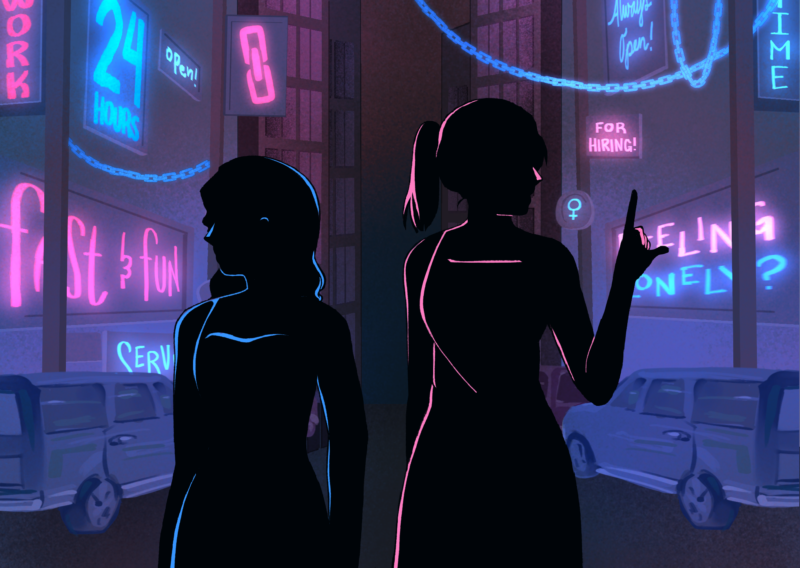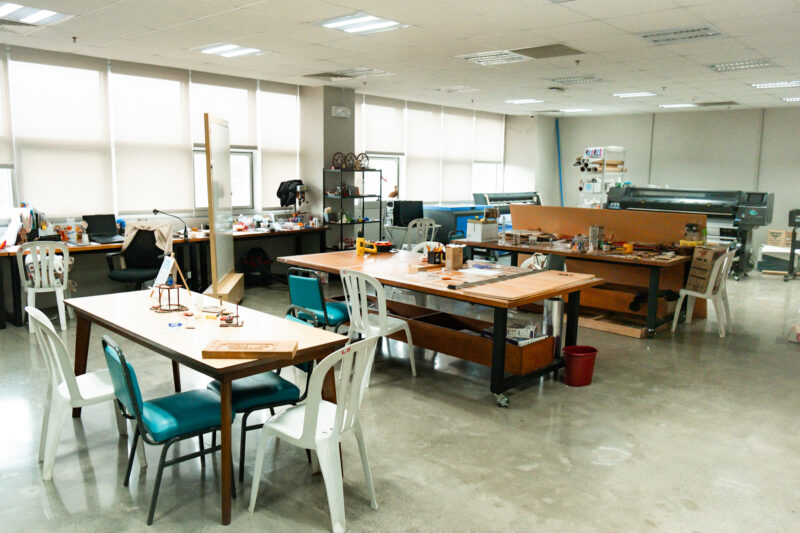You wake up to find yourself drifting aboard a space station. Around you is a floating wreck of equipment. You find dead crewmembers in the station’s other sectors. You attempt to play back the system’s recordings, only to find a faulty mainframe. Suddenly, your gear flashes red. Your vision blurs. It’s harder to move. You get a glimpse of your briefing apparatus, but everything fades. Game over: You’re out of oxygen.
ADR1FT (2016) is just one of the many out-of-this-world games that are in store for you with virtual reality (VR). Among the breakthroughs spotted at the Consumer Electronics Show (CES) in Las Vegas last January were VR platforms such as the well-anticipated Oculus Rift and PlayStation VR sets. CNET writer Scott Stein writes about CES 2016, saying, “You couldn’t walk more than a hundred feet without running into a VR headset somewhere, anywhere, at CES.”
Stein goes even further to call 2016 the “year of VR.” Today, sellers on buy-and-sell sites like eBay, HotUKDeals, and even Ateneo Trade have begun posting VR bundles for potential buyers. With VR’s resurging popularity and its unprecedented promises, it’s likely that this state-of-the-art development is plugged in for the long run.
Press start to play
The beginnings of VR date back to the decades before the 1950s, when French writer Antonin Artaud wrote about “la réalité virtuelle,” referring to the illusory nature of theatrical elements. The concept of VR then was nothing more than a perception of reality. The following decades saw the emergence of many contraptions that sought to materialize this particular concept.
In the ‘80s, American computer philosopher Jared Lanier popularized the EyePhone. This head-mounted contraption was worn with the DataGlove, which sensed hand movements. However, the popularity of early VR tech was short-lived. Chappell Ellison, a writer on Good.is, writes that the Eyephone system cost USD 250,000 then and “looked as silly as they felt.”
Information Systems and Computer Science Instructor Nicko Caluya notes that size was a pitfall of early VR platforms. “[Within] five to ten minutes, your eyes [could be] sore and [it could be] hard to navigate because you’re seated,” he says. Attempts at developing VR consoles in the ‘80s failed due to the eventual rise of the Internet, the popularity of mobile tech then, and the inconvenience of wearing these VR consoles in the first place.
Digital Game Design and Development (DGDD) Program Director Mercedes Rodrigo, PhD believes that VR firms back then faced challenges with funding. Even Lanier, who led the VR industry at one point, filed for bankruptcy by the late ‘80s.
With VR’s many kinks on the road, it’s easy to think that VR didn’t receive the hype that was expected of it. Caluya opines that popularity wasn’t an issue with VR since its fans had always demanded for it, but were let down because of its issues. “People have been clamoring for it, but the technology has just really [been] too late,” he explains.
Tech firms’ attempts to get VR to the masses didn’t stop there, though. Persistent game developers like Sega and Nintendo created more VR tech through the years. VR became lighter and accessible, quietly but surely rising to the surface of the tech industry.
Shifting through the spectrum
A technologically-driven simulation of alternate realities isn’t entirely alien to the Philippines. Last year, the Ateneo Laboratory for the Learning Sciences released Igpaw: Intramuros. The game is designed for users to grow an appreciation for Philippine colonial history, taking the user back in time through the use of a smartphone camera.
One thing about Igpaw is that it isn’t exactly VR. Caluya, who is one of the game’s head programmers, calls it augmented reality (AR). In a nutshell, our experience of reality can be enhanced by different devices at once. According to Caluya, the user still gets “a semblance of reality” in AR, while VR, on the other hand, gives the user “the feeling of being in another world.”
The game is steered by the user’s response to a dialogue with a daligmata, a tarsier-like mythical creature. The Filipino word “igpaw” means “to jump.” Rodrigo, also the executive producer of Igpaw, says that finding a title was the hardest part. “We wanted something that had to do with breaking through walls… [We had in mind] this notion of travelling to a place to discover something—overcoming obstacles.”
In more ways than one, VR and AR tech are means of teleportation. While users can be transported from place to place, jump to an array of options, or travel back in time, AR and VR carry users to a world that is more than just a game.
Tesla’s latest success is the Teslasuit. This tactile suit enables users to feel virtual pulses through haptic feedbacks that—in bygone years—could only be felt through a controller. The Teslasuit is also reminiscent of Lanier’s DataGlove that faded along with the EyePhone. From transmitting sounds and images through radio and television, it seems that we’ve arrived at the age of tactile transmission.
Tech firms are clearly stretching the limits of VR and bringing it to even bigger scales. With VR on the rise, doctors, pilots, and even members of the academe are finding hope in a more participative and in-depth experience that can immerse their target audiences in fields like medicine, aeronautics, history, and so much more.
Immersive dimensions
Along with VR’s ubiquity, however, also come precarious implications. Aside from how VR may pose risks of radiation and vertigo, cyberpsychologists have raised concerns about the effects of VR on its users’ psychological behavior. Game reviews now focus more on how VR may be a heightened avenue for escapism as compared to more conventional video games.
Last January, Jamaican teen Rudolph Revers committed suicide. Revers’ online friend David Lubin, who knew him to spend hours playing role-playing games, thinks he “[was] unable to fit into his school environment.” Lubin tells Loopjamaica.com, “We played [games] because we want to escape from the real world.”
However, computer science senior Raphael Reventar stands against the claim that “VR motivates [users] to escape reality.” There is a distinction between “how [VR is] used, [and] what it really is,” he says. From this view, the problem isn’t the game itself, but people’s struggle to interact with others the way that they want to.
On the other hand, it isn’t hard to imagine the benefits of VR. Reventar, whose second major is in DGDD, shares that he’s been to a convention where he witnessed an interface that brings physically disabled users to tourist spots around the Philippines. “That’s one possible avenue for VR,” he says, referring to how VR may cater to people with special needs.
In a video by NowThis, an online news platform, bedridden hospital patients are immersed VR to relieve them of boredom and stress while transcending the hospital’s four walls. The possibilities are endless when just sitting on a wheelchair can feel like a pleasurable roller-coaster ride.
Rodrigo sees a future where VR can be integrated into lectures like what was done with Igpaw. She shares that she has approached several colleagues from the John Gokongwei School of Management for support with integrating this technology as a tool to improve students’ learning opportunities.
The question now is when we can call the Philippines a home for VR. With the scarce supply of local VR developers, the need to cater to many markets, and the predominant demand for mobile gaming, Reventar speculates that VR may be too feeble in terms of funding and human capital to gain stability here.
He adds, however, that VR is also maintaining positive feedback. “I’ve never heard [of users that] didn’t want to at least try [VR],” Reventar says. It may be too early to tell if VR can be commercialized without us having to cope with its shortcomings, but VR is here and it’s been making a big comeback. We can now look forward to a future that has the best of both worlds, and then some.







